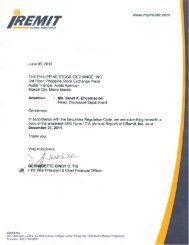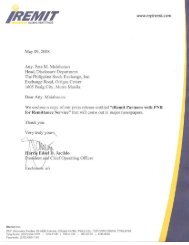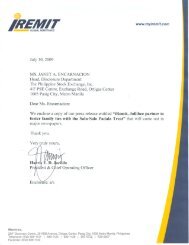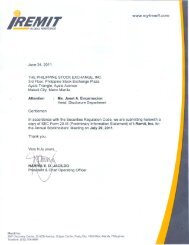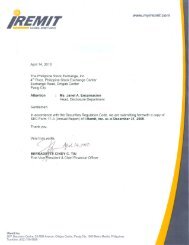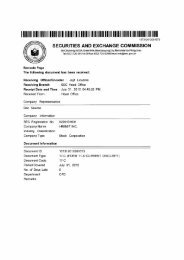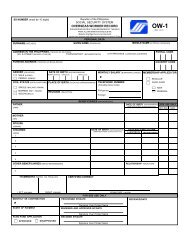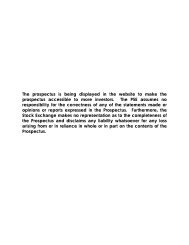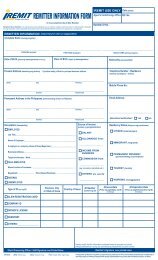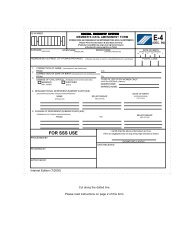SEC Form 20-IS - iRemit Global Remittance
SEC Form 20-IS - iRemit Global Remittance
SEC Form 20-IS - iRemit Global Remittance
Create successful ePaper yourself
Turn your PDF publications into a flip-book with our unique Google optimized e-Paper software.
- 18 -<br />
discontinued operations are reported separately from normal income and expenses down to the<br />
level of profit after taxes. The resulting profit or loss (after taxes) is reported separately in the<br />
consolidated statement of income.<br />
Borrowing Costs<br />
Borrowing costs are recognized as an expense when incurred.<br />
Equity<br />
Capital stock is measured at par value for all shares issued and outstanding. When the shares are<br />
sold at a premium, the difference between the proceeds and the par value is credited to ‘Capital<br />
paid-in excess of par value’ account. Direct costs incurred related to issuance of equity, such as<br />
underwriting, accounting and legal fees, printing costs and taxes are charged to ‘Capital paid-in<br />
excess of par value’ account. If the ‘Capital paid-in excess of par value’ is not sufficient, the<br />
excess is charged to profit or loss.<br />
A change in the ownership interest of a subsidiary, without a loss of control, is accounted for as an<br />
equity transaction. The excess of acquisition cost over the carrying value of the noncontrolling<br />
interest is charged against the ‘Capital paid-in excess of par value’.<br />
When the Group issues more than one class of stock, a separate account is maintained for each<br />
class of stock and the number of shares issued.<br />
‘Retained earnings’ represents accumulated earnings (losses) of the Group less dividends declared.<br />
Own equity instruments which are reacquired (treasury shares) are recognized at cost as ‘Treasury<br />
stock’ and deducted from equity. No gain or loss is recognized in the consolidated statement of<br />
income on the purchase, sale, issue or cancellation of the Group’s own equity instruments. Any<br />
difference between the carrying amount and the consideration is recognized in ‘Capital paid-in<br />
excess of par value’.<br />
Earnings per Share<br />
Basic earnings per share (EPS) is computed by dividing net income for the year attributable to the<br />
equity holders of the Parent Company by the weighted average number of common shares issued<br />
and outstanding during the year, after giving retroactive effect to any stock dividends or stock<br />
splits, if any, declared during the year. Diluted EPS is computed by dividing net income<br />
applicable to common stockholders attributable to equity holder of the Parent Company by the<br />
weighted average number of common shares issued and outstanding during the year after giving<br />
effect to assumed conversion of dilutive potential common shares.<br />
The weighted average number of ordinary shares outstanding during the period is the number of<br />
ordinary shares outstanding at the beginning of the period, adjusted by the number of ordinary<br />
shares bought back or issued during the period multiplied by a time-weighting factor. The timeweighting<br />
factor is the number of days that the shares are outstanding as a proportion of the total<br />
number of days in the period; a reasonable approximation of the weighted average is adequate in<br />
many circumstances.<br />
Dividends<br />
Cash dividends on common shares are recognized as a liability and deducted from equity when<br />
declared and approved by the Board of Directors (BOD) of the Parent Company. Stock dividends<br />
are deducted from equity when declared and approved by the BOD and stockholders of the Parent<br />
Company.<br />
*SGVMC116502*



